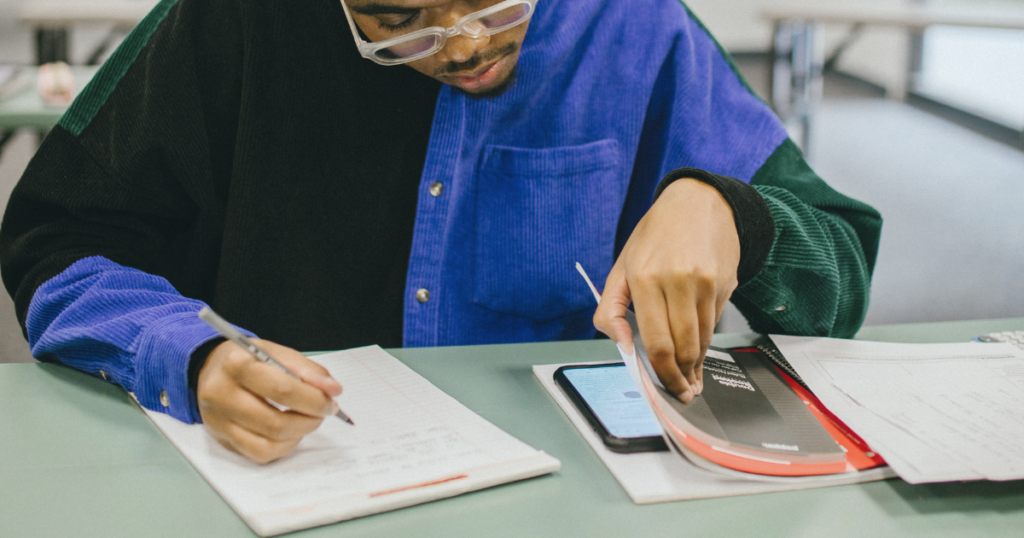10+ Cool Ways to Use AI In The Classroom This School Year
Have you wondered how to use AI in your classroom effectively?
As AI begins to seep into students’ lives, teaching that was once controlled by a teacher must now be set into autopilot. Students who hold the passport to travel to the magical land of college are being handed first-class treatment with the use of ChatGPT Airlines. However, does being on autopilot come with a cost?
Games, tutoring systems, grading systems, and other learning platforms: This is what over sixty percent of teachers use in their classrooms already. Using it for convenience and engagement paves the way for ChatGPT in our global education. And, with so many benefits to AI, like creating individualism in learning styles, closing in on common learning gaps, and developing tools we aren’t able to create ourselves–the mere sixty percent of teachers who use AI in their classes will only grow exponentially.
The question is: Is this AI flight too good to be true?
Current Concerns and Solutions
With every ying comes a yang, and when we talk about the consequences of AI in the classroom, there are some big ones. Let’s look at the top three.

Misinformation
AI tools are flawed. Even ChatGPT offers a warning under its chat box: “ChatGPT can make mistakes. Check important information.” The errors come from the tool’s source and, to a certain extent, the developers who create them, biasing the information within it. Students then use these tools to do assignments, unaware of the data’s prejudices. Resolve issues like this by using collaborative verification with students, asking them to provide the source link for their assignments to ensure they are vetting the information they are using.
Ethics
Classroom ethics are well-established in our school systems. Although students would love to use AI to write their assignments and pass their tests, our code of ethics frowns upon it. With many websites offering book summaries and even pre-written essays, trust is essential in the classroom. Grading papers can be unfairly graded when the words written are done better than the next with help provided by AI. Establish a sense of transparency with students by using systems that can detect assisted work and limit the amount of tools students can use to assist them with assignments..
Plagiarism
Essays that could have been written by another student for money are now written by a computer for free. Students, despite severe consequences, continue to use this rather than their critical thinking regularly. This creates an iron wall between you and the student, leaving no room for you to tackle any challenges that could be encountered because they glide right by you. Help your students climb over that binding wall by using tools that can immediately detect paraphrasing. You can additionally create assignments that are difficult to solve by AI, ultimately leaving students with no choice but to use their thinking caps.
Considerations for Using AI
With the knowledge that AI isn’t going anywhere, here are some considerations that make adopting into your classroom easier on you.
Accept It
With robots now being able to respond to their nose getting touched, having AI in a classroom is inevitable. Situations will occur where restrictions and policies at the school that were once enforced will only be taken lightly.
There will be assignments that you spent long nights working on, just to be copied and pasted into ChatGPT out of pure laziness.
There will come a point in the year where plagiarism will only rise, and ethics will dwindle. Regardless of the circumstance, it’s essential to accept it. This active choice may save you from future frustration and help put processes into place to maintain academic excellence.
Choose One or More AI Tools
In accepting AI into your classroom, you don’t have to just tolerate it–practice including it too. Start by researching the variety of tools you can use in your classroom.
Then, consider which ones you will use the most: Will it be used to save time by having the system grade a large body of student’s papers?
Will it be used to create engaging games for your students to help them retain information more interactively?
Are you looking for a way to assess your student’s preferred way of learning? Whatever the case, one or more of these tools can become incredibly convenient.
Adapt to Your Assignments Accordingly
As a teacher, the biggest concern is that students will just pull up an AI to cheat on their assignments, but if your assignment is that easy in there lies the problem.
Harvard lecturer Houman Harouni says, “we have to create assignments that push [students] to the point where they have to question what is the framework that is being used here and what would it mean for me to radically change this framework.”
Making your questions more complex, personal and reflexive ensures that students use their own analytic and critical thinking skills to get the work rather than using a generative tool.
Teach Students How To Use AI
With all this research you have done, figuring out what tools to use most often in your classroom and experiencing it through your assignments, why not introduce these tools to your students? With some many different learning styles within the same group of students, there are bound to be pupils that benefit from these tools. Use them alongside students whenever possible, demonstrating appropriate ways to use them ethically. You can even go over AI responses to questions with your students for your consideration and to spark engaging discussions.
How AI Can Be Used in a Classroom?
When it comes to AI, there are plenty of creative ways to use them to spice up your lesson plans, but with all the choices it can be hard to know where to start.
Still brainstorming ideas on how AI can be used in the classroom? Some of these ideas can help you:
- Use AI images as writing prompts
- Use AI responses to spur scientific thinking
- Find fault in AI-generated historical images
- Use AI math tools to see all sides of a problem
- Learn about voice from ChatGPT imitations of famous authors
- Chat with historical figures
- Speak with AI in a foreign language
- Ask students to chat about GPT’s writing
- Get into the math behind
- Disgust the many uses of AI in science
- Talk about the impacts of new technologies including AI
Grab Your Ticket
While you may have read the same books as your students did, the way students can learn and stimulate themselves is drastically different. Whether you find this good or bad, AI is spreading to jobs that society would have never thought of—like the classrooms you’re teaching in today.
In short, grab your tickets and join your students’ First Class on ChatGPT Airlines. With so many beautiful destinations like Auto-Grade Island or The City of Diverse Learning, stop and soak in all the sights to see.
Like all things, however, understand that there may also be bumps to the flight: Hurricane Plagiarism may come spontaneously to knock you off your course, for example. When situations like that occur, remember to stay consistent with yourself and to know that you set the tone for how much or how little AI can be used in class—after all, this is your classroom.
This is your Airline.
If this article has inspired you, please subscribe to our newsletter to be alerted when the next piece is released. You can also support the continued creation of this content by making a tax-deductible donation.





